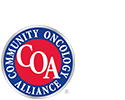Personal Connections with Pharmacists Drive Medication Adherence Outcomes
With nearly half of all patients in the US not taking their medications as prescribed, medication non-adherence remains a dangerous and expensive problem that costs the health care system $329 billion annually (Express Scripts Drug Trend Report), meaning more hospitalizations and visits to the emergency room (ER).
So what’s the good news? Effective, comprehensive solutions are emerging to reverse this trend by involving the pharmacist to improve medication adherence rates through a personal connection with patients.
Recent stories underscore how pharmacists are uniquely positioned to engage patients in conversations that help them understand why treatments are prescribed and why meds should be taken as directed.
A report released on June 25 by the National Community Pharmacists Association (NCPA), for example, illustrates how interpersonal relationships between pharmacists and patients boost adherence. Authors of the report found that a patient’s sense of connectedness with one’s pharmacist or pharmacy staff was the survey’s “single strongest individual predictor of medication adherence.”
“Pharmacists can help patients and caregivers overcome barriers to effectively and consistently follow medication regimens,” NCPA CEO B. Douglas Hoey, RPh, MBA, said in a statement. “Indeed, independent community pharmacists in particular may be well-suited to boost patient adherence given their close connection with patients and their caregivers.”
According to the American Pharmacists Association (APhA), one effective method pharmacists can use to improve adherence is medication therapy management (MTM) services for patients taking more than one drug for multiple chronic medical conditions. In addition to therapy reviews, pharmacotherapy consults, anticoagulation management, immunizations, health and wellness programs and other clinical services, MTM involves the following elements:
- Comprehensive medication review, including a personal medication report that lists all the medications the patient is taking.
- Medication action plan.
- Education and counseling or other resources to enhance understanding about using the medication and to improve adherence.
- Coordination of care, including documenting MTM services, providing the documentation to other providers, and referring patients to other providers as needed.
Pharmacists can also leverage a variety of practical tips to help patients improve adherence that include:
- Discussing the appropriateness of each medication and its impact on their multiple medical conditions.
- Evaluating the effectiveness and safety of each medication.
- Assessing whether some medications may be unnecessary and should be discontinued.
- Discussing the need to change medications or doses if problems arise.
The implications of improved adherence will help lower the cost of treating chronic conditions, decrease hospitalizations, reduce ER visits and by extension lower the risk of treatment failures, serious adverse reactions and deaths too.
“Studies have repeatedly recorded the cost-saving effect of MTM,” said Kevin Schweers, Senior Vice President, Public Affairs, NCPA. “One Minnesota study found a 12:1 return-on-investment for MTM. In North Carolina, Kerr Drug reports that MTM programs for seniors produced a 13:1 return. Improved adherence would likely help reduce hospitalizations as well. So many prescription drugs are intended to treat chronic conditions, such as heart disease, that can result in hospitalization. In addition, hospital re-admissions can result from the failure to stick to a prescribed medication regimen.”
Joel Zive, adjunct clinical faculty, University of Florida College of Pharmacy, underscored the need for patients to cultivate relationships with their pharmacists.
“While MTM services are quite important in helping adherence, getting to know your pharmacist’s name is helpful in establishing a relationship with your pharmacist,” he said. “Pharmacists are trained to pick up clinical clues from patients. This is why if you are having unusual reactions medications, speaking to your pharmacist is an option.”
Although MTM services are an effective way to increase adherence, greater participation among patients and pharmacists is needed according to the APhA and the National Council on Patient Information and Education (NCPIE).
In addition to leveraging tips and strategies to boost adherence, pharmacists can also draw on a number of resources for patients, referring them to the NCPIE wallet card and to a brochure made available by NCPIE and the Agency for Healthcare Research and Quality (AHRQ), “Your Medicine: Be Smart. Be Safe.”
What else can pharmacists do to engage patients? How can stakeholders in health care, government, academia and the private sector collaborate to improve dialogue among pharmacists and patients around strategies that increase adherence?


















